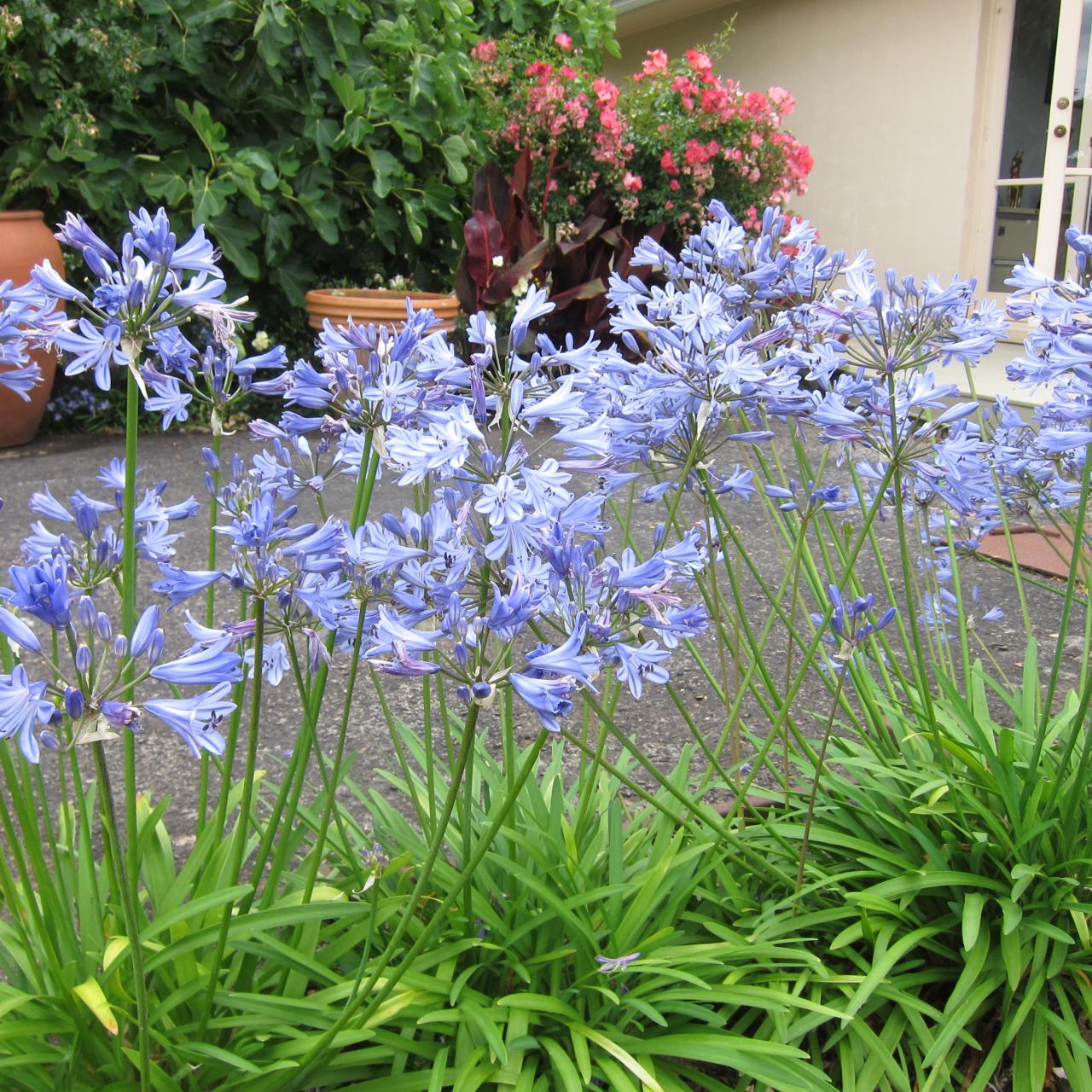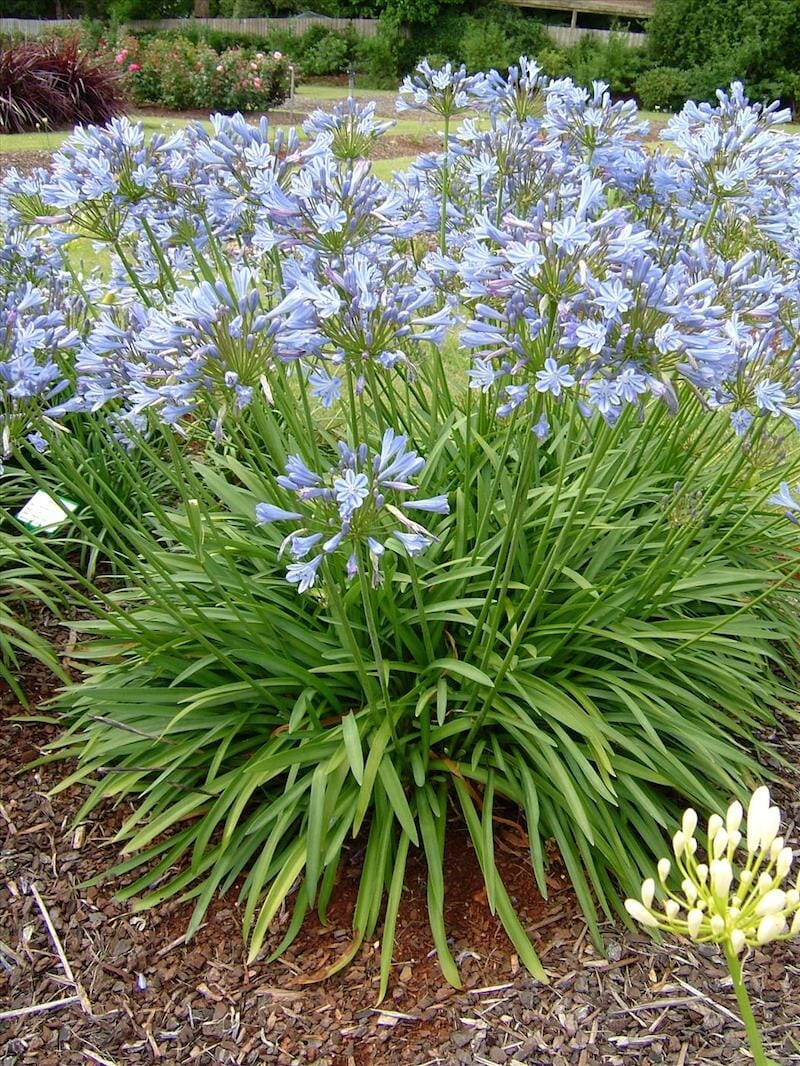Agapanthus Expanding Problems: Dirt, Sunshine, and Watering
Agapanthus Expanding Problems: Dirt, Sunshine, and Watering
Blog Article
Releasing the Secret to Successful Agapanthus Farming: Idea for a Flourishing Yard
In the realm of gardening, cultivating agapanthus effectively requires a tactical method that includes numerous elements of plant care. With mindful interest to information, one can open the secrets to supporting these magnificent flowers, leading to a yard that prospers with elegance and vibrancy. By comprehending the subtleties of agapanthus growing, one can produce a setting where these plants prosper and bloom perfectly. In the following discussion, we will explore crucial ideas and tricks that will certainly assist you towards a prospering agapanthus yard, providing understandings into finest methods, dirt problems, sprinkling methods, and a lot more.
Planting Agapanthus: Finest Practices
When growing Agapanthus, proper soil preparation is necessary for guaranteeing successful growth and growth of these attractive flowers. Agapanthus, typically called Lily of the Nile or African lily, grows in well-draining dirt with a slightly acidic to neutral pH level - Agapanthus. Before planting, it is critical to amend heavy clay dirts with natural issue such as garden compost or peat moss to boost water drainage and offer necessary nutrients for the plants
To grow Agapanthus, choose a place that gets complete sunshine to partial shade, as this will certainly advertise healthy growth and bountiful blooming. Dig a hole two times the diameter of the plant's origin ball and put the Agapanthus at the very same deepness it was previously growing. Carefully backfill the hole with soil, pressing down firmly to remove any kind of air pockets around the roots.
Water the newly planted Agapanthus extensively and continue to maintain the soil evenly moist, especially during the plant's energetic growing season. Agapanthus. Using a balanced fertilizer once a month can further support the plant's development and flowering. By adhering to these finest techniques for planting Agapanthus, you can develop a magnificent display screen of these exciting blossoms in your yard
Perfect Dirt Issues for Agapanthus
For optimal growth and blooming success of Agapanthus plants, guaranteeing the soil problems are excellent is vital. Agapanthus thrives in well-draining soil with a slightly acidic to neutral pH level varying from 6.0 to 7.0. This kind of soil enables sufficient water drainage, stopping waterlogging which can result in root rot. To enhance soil water drainage, take into consideration adding organic issue such as compost or peat moss when preparing the growing website. Additionally, Agapanthus favors dirt that is rich in nutrients, so incorporating a well balanced fertilizer throughout the expanding season can advertise healthy and balanced growth and vivid flowers.

Watering and Feeding Tips
To make sure healthy growth and lively blossoms, proper watering and fertilizing methods are necessary for effective Agapanthus growing. Agapanthus plants profit from regular watering, particularly throughout the expanding season.
When it comes to fertilizing Agapanthus, a well balanced plant food with equivalent parts nitrogen, phosphorus, and potassium can be applied in the spring to advertise healthy and balanced growth and flowering. Slow-release fertilizers are suitable for offering nutrients gradually over a prolonged duration. Stay clear of over-fertilizing, as this can result in extreme foliage development at the expense of blooms.
Additionally, integrating natural issue like garden compost right into the dirt can enhance nutrient levels and improve dirt structure, helping in the overall health and wellness of the Agapanthus plants. By complying with these watering and fertilizing suggestions, gardeners can guarantee their Agapanthus plants grow and create spectacular display screens of blossoms.
Trimming and Deadheading Methods
Proper trimming and deadheading strategies play a crucial role in preserving the health and wellness and looks of Agapanthus plants, matching the necessary practices of watering and fertilizing for effective growing. Trimming Agapanthus includes removing invested blossom heads, dead or yellowing leaves, and general shaping of the plant to advertise much better growth. Deadheading, the process of eliminating discolored flowers, not just improves the plant's appearance but also urges further growing.
When deadheading Agapanthus, it is advisable to clip click site off the blossom stem at the base using sharp, tidy shears. This process redirects the plant's energy from seed production back into origin and vegetation development, advertising a much healthier and more durable plant. Routine deadheading can extend the flowering period of Agapanthus and prevent self-seeding, which can result in overcrowding.
In terms of pruning, Agapanthus typically gain from a light trim after blossoming to clean up the plant and encourage fresh growth. Cutting down the invested flower stems and eliminating any kind of damaged or dead vegetation helps preserve the plant's vitality and total look. Nevertheless, it is vital to avoid reducing into the crown of the plant, as this can compromise its health and wellness.

Protecting Agapanthus From Pests and Diseases
Applying effective insect and condition administration strategies is essential to protecting the wellness and vitality of Agapanthus plants in cultivation. One common bug that influences Agapanthus is the Agapanthus borer, a caterpillar that passages into the plant, creating damage to the blossoms and Get More Information leaves.
In enhancement to bugs, Agapanthus are prone to diseases such as origin rot and fungal leaf spots. By remaining cautious and addressing insect and illness issues quickly, garden enthusiasts can assist their Agapanthus grow and flourish.
:strip_icc()/agapanthus-africanus-b959396b-5696f86e059c46f299d1834ba687c6eb.jpg)
Verdict
Finally, successful growing of agapanthus requires correct growing methods, optimal dirt conditions, ample watering and feeding, routine trimming and deadheading, and protection from bugs and conditions. By complying with these tips and techniques, garden enthusiasts can make sure a prospering garden full of gorgeous agapanthus blooms. Agapanthus. Bear in mind to preserve regular care and focus to detail to promote the wellness and durability of these spectacular plants
When growing Agapanthus, appropriate dirt prep work is vital for making certain effective development and advancement of these stunning flowers.Water the recently planted Agapanthus extensively and continue to keep the dirt evenly moist, especially throughout the plant's energetic expanding period.For optimal growth and growing success of Agapanthus plants, ensuring the dirt conditions are suitable is important. When transplanting or planting Agapanthus, make certain the soil is well-prepared to offer the essential foundation for Home Page the plants to develop themselves effectively. One usual insect that affects Agapanthus is the Agapanthus borer, a caterpillar that passages into the plant, causing damage to the leaves and blossoms.
Report this page